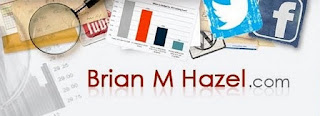
Emails are short and to the point, so every word and every line counts.
Most people receive dozens, if not hundreds, or emails every week.
Most people receive dozens, if not hundreds, or emails every week.
So to make sure yours get noticed, you want to use -> The Most Effective Methods
to make your emails stand out.
This can mean the difference between them being opened or deleted without being read.
to make your emails stand out.
This can mean the difference between them being opened or deleted without being read.
The Subject Line
The first thing most people look at on an email is the subject line. Here is where you should offer a very brief “bullet point” description of what the email message is about.
Most people will only open a small percentage of their emails. So if you leave your subject line blank, or use a description that doesn’t grab their attention, your message will probably never be read.
Great Subject Lines
Subject lines should be both brief and specific. You should limit them to no more than a dozen words at most.
Avoid using bombastic, superlative words such as “incredible,” “amazing,” “sensational,” and other adjectives. These types of words scream “spam” to most people.
Instead, you want to educate your intended reader rather than trying to impress them and you are more likely to have your message opened.
Who’s Getting the Email?
On the “To:” line, you should list the actual intended recipients of your email.
On the “CC:” line—which, incidentally, stands for “carbon copy,” a callback to a time when people used carbon paper to make multiple copies of the same paper memo — you should list secondary recipients, such as those readers who may find the content useful but aren’t required to act on it.
The third line is “BCC:”, which stands for “blind carbon copy.” These are readers who will receive the email without their addresses being seen on the copies sent to recipients listed under the “To:” and “CC:” lines.
This lets you send copies of the email to people such as your boss or human resources if you are sending sensitive or disciplinary emails to your subordinates.
The Salutation
If a salutation is used at all, it is typically listed as the first line of the email.
Salutations are such things as “Dear Friend,” “Gentlemen,” or “To Whom It May Concern.” It’s actually left over from old-fashioned handwritten letters. Usually, except for special circumstances, it is not usually necessary in an email.
Whether you use a salutation and/or the type of salutation you use ultimately depends on the circumstances of your email and the requirements of your work environment.
How to Sign Emails
The person getting your email already knows who sent it because your email address and name are listed in the “From:” line.
But the email signature gives you a chance to provide more information about yourself, such as your full name, title, street address, and office and cell phone numbers, all of which is useful information to share with your recipients.
Signing Off
If you are including an email signature, use sign-offs that are friendly yet professional. These include “Best,” “Sincerely,” “Warm regards,” and “Continued success.”
In business emails, avoid sign offs that sound overly familiar or using slang, such as “Talk at you later” or
“Chat with you soon.”
If you want to use an autosignature of your actual signature, that’s acceptable but not really necessary.
If you want to include it, you will have to scan your signature and add it to your auto signature button.
If you’d like to have access to even more powerful marketing tips,
as well as a way to generate conversion-ready Internet marketing prospects each month,
Click Here to Learn How => The Binary Hybrid Wealth System
Produces Massive Daily Cash Flow,
And...a HUGE Monthly Residual Income.

P. S. ***Catch My Most Recently Recorded Live Interview ==>> ( Click Here )

No comments:
Post a Comment